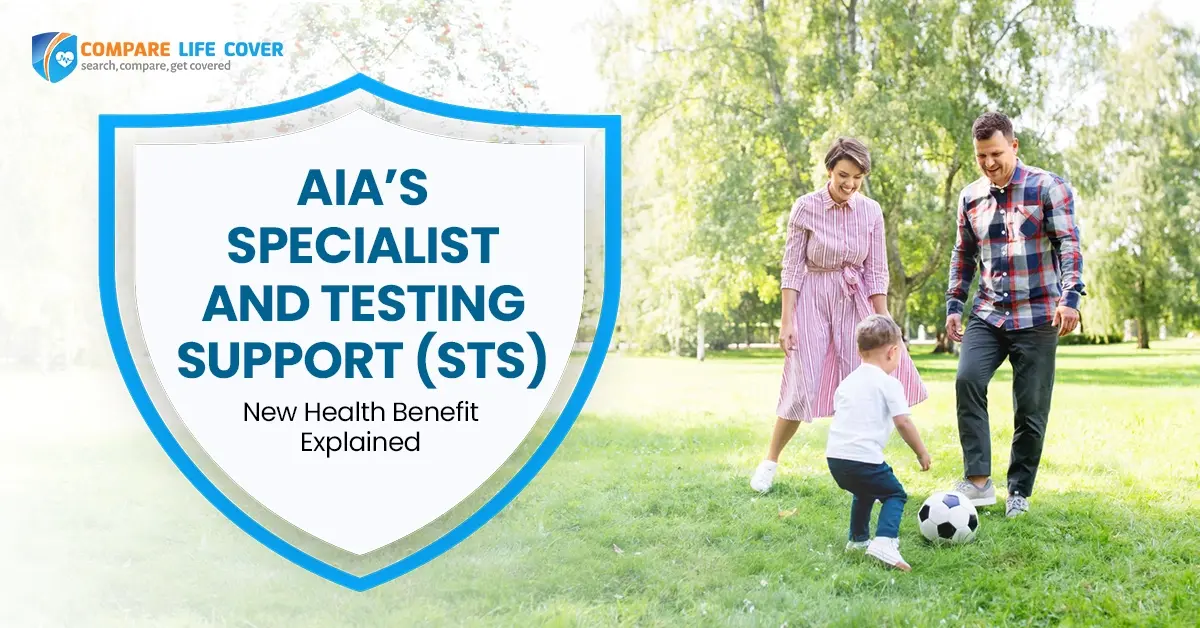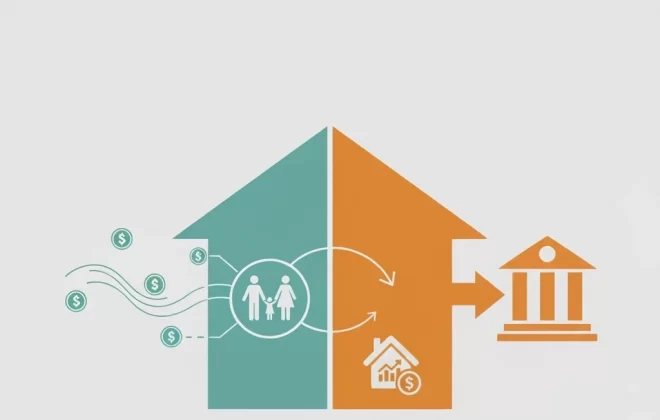AIA’s Specialist and Testing Support – New Health Benefit Explained
Table of Contents
ToggleIntroduction
AIA New Zealand has launched a new health insurance benefit called Specialist and Testing Support (STS), effective 1 October 2025. STS is designed for Kiwis who want fast access to private specialists and diagnostic tests without paying for a full hospital policy. It focuses on the stage most people need first: getting a precise diagnosis quickly.
With living costs rising and public wait times for scans and specialist appointments increasing, many people are looking for affordable, practical cover. STS aims to bridge that gap — helping you move faster from “something’s not right” to “I know what it is and what happens next.” Once you have a confirmed diagnosis, you can enter the public treatment pathway sooner or make informed choices about any private treatment you may consider separately.
This article explains what Specialist and Testing Support (STS) is, what it covers (and doesn’t), and who can apply, so you can decide whether this diagnostic-first approach suits your needs and budget.
Compare AIA’s STS with other NZ health covers — find the best fit for your needs today
What Is AIA’s STS Benefit?
Specialist and Testing Support (STS) is a diagnosis-only benefit. It pays for specialist consultations and diagnostic investigations when a GP or medical practitioner refers you. The intent is simple: if you need to see a specialist or get tests like an MRI, CT, colonoscopy, or biopsy, STS helps cover those costs promptly, so you’re not stuck waiting.
A few key points about how STS is structured:
- Add-on, not standalone: STS is offered as an optional add-on to eligible AIA Living policies — typically life insurance, trauma (critical illness), income protection, or total permanent disablement. It isn’t sold on its own, and can’t be added to AIA Health or Starter Plans.
- Referral-based: Claims generally require a referral from your GP or another registered medical practitioner.
- Excess options: You choose either $0 excess (higher premium, no upfront cost on eligible claims) or $250 excess (lower premium; you pay the first $250 of eligible claims per policy year).
- Focus on speed to diagnosis: By enabling private access for consults and tests, STS aims to get answers sooner. If treatment is needed, you’d typically proceed via the public system or separate comprehensive cover if you hold it.
What’s Covered and What’s Not?
What Specialist and Testing Support Covers (Diagnosis-Focused)
- Specialist consultations — up to $10,000 per year
Private consultations with referred specialists (for example, cardiology, dermatology, gastroenterology, gynaecology, ENT and more). This annual limit is designed to comfortably cover multiple consults if needed. - Diagnostic tests & procedures — up to $100,000 per year
A broad list of approved investigations when referred by a doctor, commonly including:
MRI, CT and PET scans; X-rays and ultrasounds; ECG and heart monitoring; blood tests and other lab work; biopsies; mammograms; allergy testing; colonoscopies and endoscopies. These limits are typically sufficient for most people’s diagnostic needs in a year. - Pregnancy & infertility investigations
After 24 months of continuous cover, STS contributes up to $1,500 per policy year toward obstetric-related specialist care or infertility diagnostics/treatment components (such as specialist consultations and approved tests). Note: obstetric claims are also capped at $1,500 per pregnancy. This is a modest, diagnostic-oriented allowance — it’s not full maternity cover. - Preventive health screening allowance
A periodic allowance toward approved screening tests (for example, skin checks, heart health checks, or certain cancer screenings) to encourage early detection:- Up to $500 every 3 years (standard policyholders)
- Up to $750 every 3 years for AIA Vitality members
Eligibility and approved screenings are defined in the policy wording, and the use is intended for preventive checks at sensible intervals.
- Faster access to diagnosis
By using private specialists and diagnostics, you can typically move faster from symptoms to a precise diagnosis. That can help you enter public treatment pathways sooner with evidence in hand, or consider private treatment (funded separately) if that’s appropriate for you.
Important: STS benefits generally require services to be clinically indicated and referred. Always keep referrals and itemised invoices for claims.
What STS Doesn’t Cover
- Treatment, surgery, hospitalisation
STS does not pay for treatment or operations (e.g., surgery, chemotherapy, private hospital stays, surgical consumables, or post-operative care). It stops at diagnosis. If something serious is found, you’d rely on the public health system or separate comprehensive insurance for treatment. - General healthcare outside diagnostics
Routine GP visits, prescriptions, physiotherapy, dental, optical, and similar everyday healthcare costs are not covered under STS. - Overseas services
STS covers New Zealand-based specialist consultations and diagnostic services. Tests or consults performed outside NZ aren’t eligible. - Amounts above annual limits
Claims are capped at the stated annual limits (e.g., $10,000 for specialists; $100,000 for diagnostics). Any eligible costs beyond those limits in the same policy year are your responsibility. - Waiting periods
The pregnancy/infertility allowance is available only after 24 months of continuous cover. The screening allowance is available once every 3 years (with the higher allowance for AIA Vitality members). These timings help ensure the benefit is used as intended. - Pre-existing conditions
Like most health-related cover, underwriting applies. Pre-existing conditions may be excluded or subject to specific terms unless expressly accepted by the insurer. Claims for conditions that existed (or showed symptoms) before cover starts are generally not covered.
Bottom line: STS is diagnostic insurance. It’s excellent for specialist access and tests, but it won’t cover treatment costs. Many Kiwis pair this approach with the public system for treatment, or hold separate comprehensive cover if they want private treatment funded.
Who Can Apply? (Eligibility & How It’s Set Up)
- Entry ages: You can apply from 3 months old up to 70 years of age at entry (standard acceptance at entry; applications beyond 70 are typically not accepted).
- Add-on only (not standalone): STS must be attached to an eligible AIA Living policy — for example, Life Insurance, Trauma/Critical Illness, Income Protection, or Total Permanent Disablement. It can’t be added to AIA Health or Starter Plans, and it isn’t sold on its own.(AIA)
- Underwriting applies: You’ll answer health questions. Depending on your medical history, exclusions or loadings may apply. Pre-existing conditions are generally not covered unless AIA agrees in writing.
- Claims need referrals: Most claims require a GP/specialist referral and that the service is clinically indicated. Keep referrals and itemised invoices.
- Where cover applies: STS covers New Zealand-based specialist consultations and diagnostic services.
- Excess choice & premiums: Pick $0 excess (higher premium, no out-of-pocket on eligible claims) or $250 excess (lower premium; you pay the first $250 of eligible claims per policy year).
- Cost drivers: Premiums are typically lower than comprehensive health insurance since treatment isn’t covered. Your age, excess choice, and any eligible programme or multi-benefit discounts influence the price.
Compare now to see how STS could fit with your existing or planned cover.
Why It Might Suit You (Common Scenarios)
- Younger adults starting out
You want practical, budget-friendly cover for private diagnostics without paying for hospital benefits you’re unlikely to use right now. STS focuses on what you’ll need first — specialist access and tests — so you can act quickly if something feels off. - Families planning ahead
You’re thinking about pregnancy in the next few years or exploring fertility. After 24 months, STS provides a modest allowance toward obstetric scans and fertility investigations (diagnostic components only). It won’t fund birth or full fertility treatment, but it can help with key tests and consultations. - Frustrated by public wait times
You’ve experienced delays for scans or specialist appointments. With STS, you can go private for consultations and testing, get a confirmed diagnosis earlier, and then proceed to public treatment sooner with the clinical evidence in hand — or consider private treatment funded separately. - Scaling back from full health cover
Comprehensive health insurance has become expensive. STS can be a middle-ground: you retain fast diagnostic access while managing costs, and rely on the public system (or separate cover) for treatment if required. - Health-conscious Kiwis
You value preventive screenings and early detection. The screening allowance every few years helps with proactive checks like skin, heart, or certain cancer screenings (within eligibility rules), supporting a prevention-first mindset.
Ready to get clarity on your health? Compare Now to see what others are offering or apply for AIA’s STS cover today.
Things to Consider (Key Trade-offs & Practicalities)
- Diagnosis-only cover
STS is for specialist consultations and diagnostic investigations. It doesn’t fund treatments, surgeries, hospital stays, chemotherapy, or post-operative care. If a serious condition is found, you’ll rely on the public system or separate comprehensive cover. - Public system partnership
The usual pathway is: diagnose privately with STS, then proceed to public treatment where appropriate. Many Kiwis prefer this balance, but you’ll need to be comfortable with public wait times for procedures — or prepared to self-fund private treatment if you want it sooner. - Benefit limits & caps.
Annual limits are $10,000 for specialist consultations and $100,000 for diagnostic procedures. The pregnancy/infertility allowance is $1,500 per policy year and also capped at $1,500 per pregnancy. The screening allowance is available every 3 years (higher for AIA Vitality members). Costs above these limits are your responsibility. - Waiting periods
You must hold STS for 24 months before claiming for pregnancy/infertility diagnostics. The screening allowance is available only once every 3 years (with a shorter timing and higher amount for Vitality members, as defined in the policy). Core specialist and diagnostic benefits for new conditions generally apply once cover is active. - Excess vs premium
Choose $0 (higher premium, no claim excess) or $250 (lower premium, you pay the first $250 of eligible claims per policy year). Consider how often you expect to claim and what level of out-of-pocket you’re comfortable with. - Add-on structure
You’ll need an eligible AIA Living base policy (life, trauma, income, or TPD) to attach STS. If you don’t have one, factor in the application and underwriting for that base cover as well. - NZ-only coverage
Claims must relate to services performed in New Zealand. Overseas consultations and tests aren’t covered. - Usual insurance conditions
Underwriting applies; pre-existing conditions may be excluded unless AIA accepts them in writing. If ACC applies (injury-related), ACC is generally the first payer. Always review the policy wording and your policy schedule so you’re clear on eligibility, limits, and exclusions for your situation.
Why It Matters
Early answers, less uncertainty: When something feels wrong, the biggest stress is often not knowing what it is. STS is built to help you move quickly from symptoms to a clear diagnosis, so you and your GP or specialist can plan next steps with confidence.
Better timing for treatment decisions: A confirmed diagnosis typically means you can enter public treatment pathways sooner and discuss realistic timeframes with your care team. If you’re considering private treatment, having the diagnostics done gives you the information you need to weigh costs and options.
Practical affordability: Because Specialist and Testing Support (STS) excludes treatment and focuses on specialists and tests, premiums are generally more affordable than comprehensive hospital cover. For many households, it’s a pragmatic way to maintain private access to diagnostics without overcommitting the budget.
Supports prevention: The screening allowance encourages proactive health checks at sensible intervals. That emphasis on early detection aligns with how many Kiwis want to manage their health: check early, act early, and avoid delays where possible.
Works with how NZ healthcare operates: Many New Zealanders already combine private diagnostics with public treatment. STS formalises that approach into a clear, budget-friendly benefit: get the tests you need without long waits, then proceed appropriately through the public system (or via separate cover if you have it).
Final Thoughts
How to decide: Consider your budget, your comfort with the public treatment pathway, and how important speed to diagnosis is for you. If you prefer to keep premiums manageable while ensuring you can get seen and scanned promptly when needed, STS could be a strong fit.
Compare now to see if AIA’s STS — or another option — suits your needs and budget.
Latest Post
- Life Insurance for Senior Citizens in NZ: The 2025 Master Guide
- AIA’s Specialist and Testing Support – New Health Benefit Explained
- How Much Life Insurance in NZ Do Kiwis Need? 2025 Expert Guide
- Life Insurance vs Mortgage Protection in NZ: Key Differences
- Best Life Insurance Policies in NZ 2025: Expert Kiwi Guide



